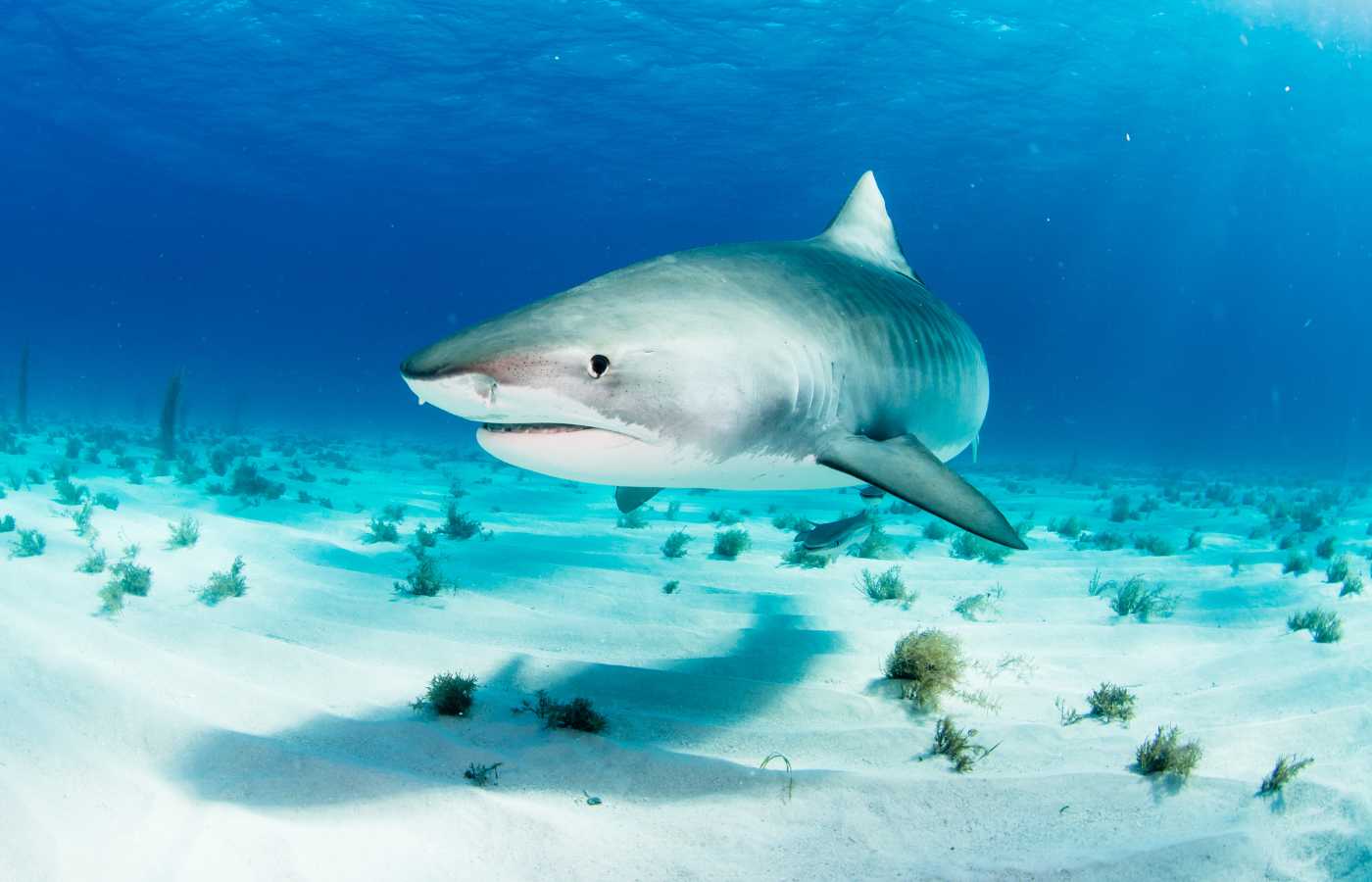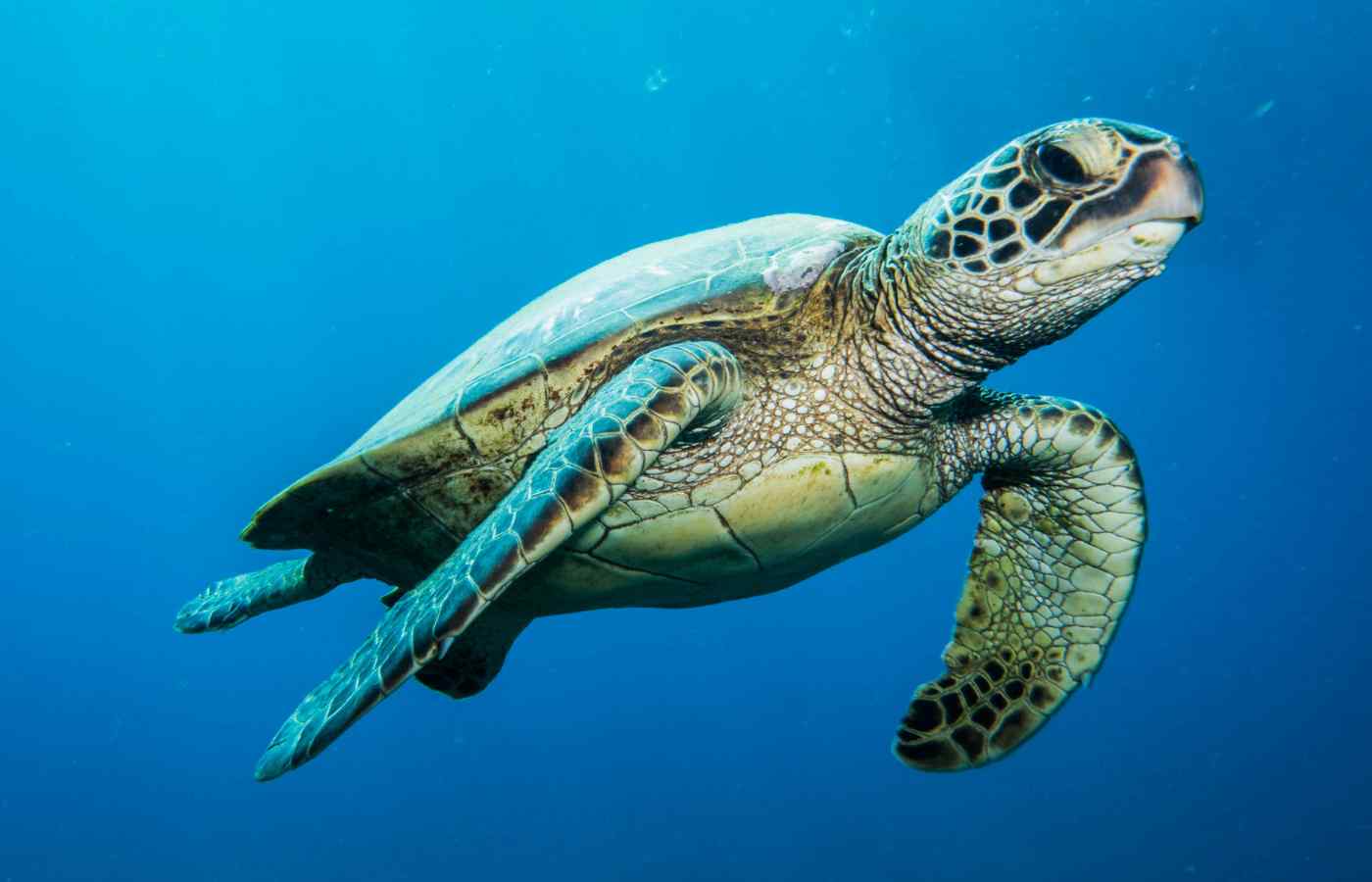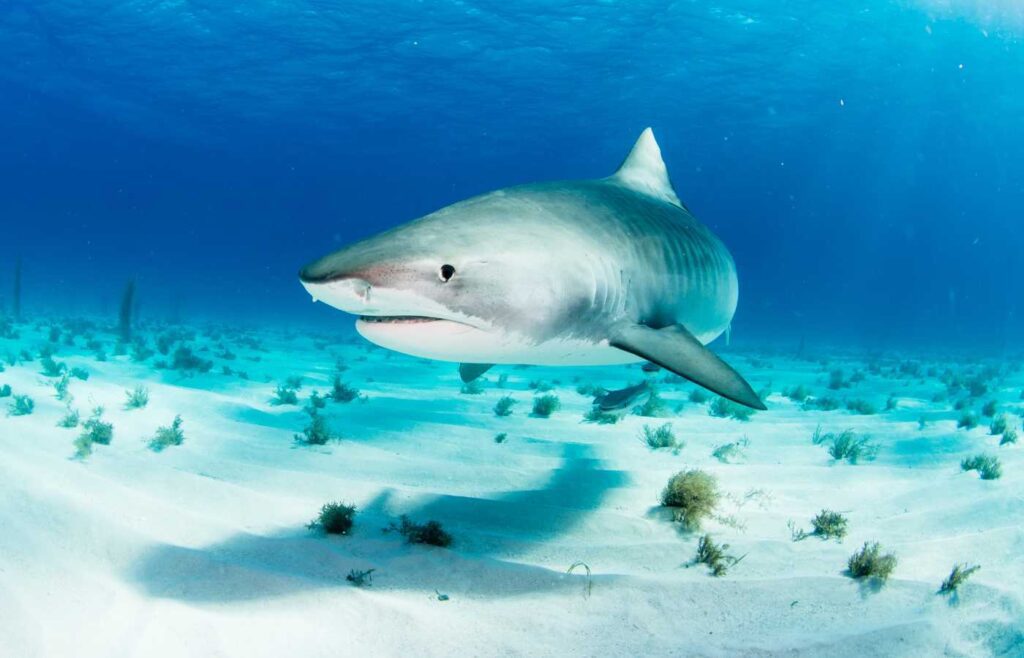
July 14th is Shark Awareness Day, and there’s no better time to learn some fascinating facts about these amazing fish.
Did you know some sharks are smaller than a human hand? Or that they have no bones at all? Or that some of them can live for 500 years?
Read on for more incredible fun facts about sharks:
OVERVIEW
1. There are over 500 different types of sharks in the world. (Source: pbs.org)
2. The most well-known species of sharks include the tiger shark, the great white shark and the hammerhead shark. (Source: pbs.org)
3. Sharks lives in oceans all around the globe. They live in both deep water and shallow water, and in all temperatures, from tropical coral reefs to the Arctic sea ice. (Source: pbs.org)
4. Sharks are actually fish (not marine mammals), despite their size and despite the fact that some of them do give birth to live young.
Interested in other marine animals? Check out Bottlenose Dolphin Facts for Kids to learn about another fascinating ocean creature.
SIZE
5. The smallest shark is the dwarf lantern shark. It’s found along the northern tip of South America.
6. A Dwarf Lantern Shark is smaller than a human hand! I (today.com)
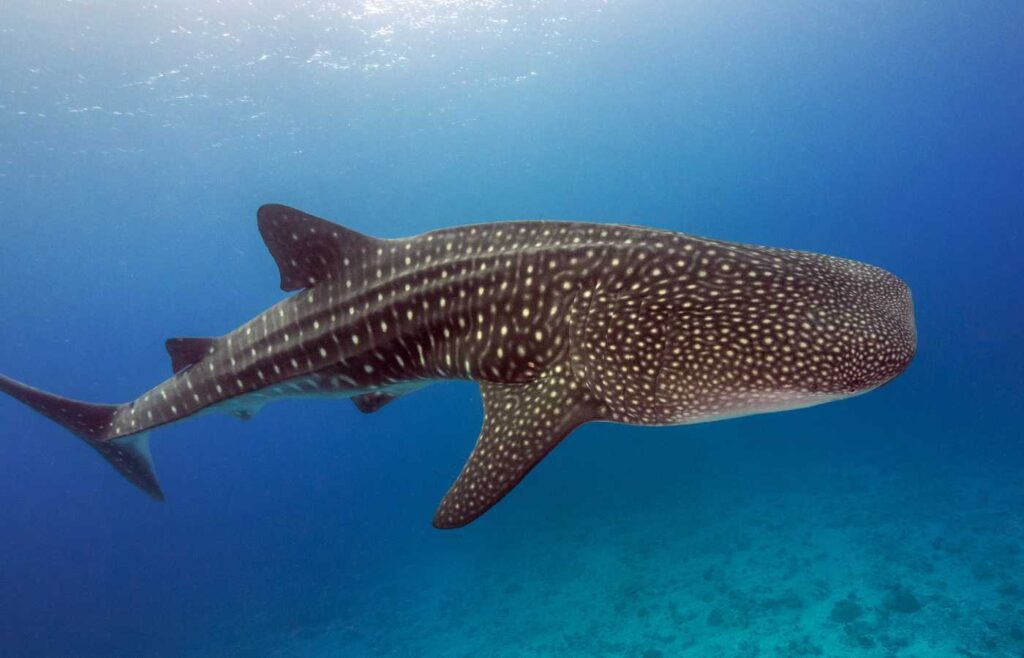
7. The biggest shark in the ocean is the whale shark.
8. A whale shark can grow up to 40 feet long. (today.com)
9. Whale sharks can weigh as much as 40 tons!
Sharks may rule the ocean, but on land, elephants are the largest and most powerful mammals. Discover more in Elephant Facts for Kids.
10. Basking sharks are the world’s second largest shark (and the second largest fish). It can grow as long as 32 feet and weigh more than five tons. (Source: www.fisheries.noaa.gov)
11. A great white shark may grow to be 20 feet long. (Source: kids.nationalgeographic.com)
Whales are also incredible creatures. Learn more about their massive size and unique traits in Whale Facts for Kids.
SPEED
12. Great whites sharks can swim up to 30 km per hour. (Source: sharktourshawaii.com)
13. The Greenland Shark is the slowest moving fish ever recorded. It’s almost as big as the Whale Shark, but it only moves about .8 miles per hour, slower than a human walks. They mostly feast on sleeping seals, using their great sense of smell to find them. (Source: treehugger.com)
While sharks are fast in water, on land, the fastest animal is the cheetah! Discover its incredible speed in Cheetah Facts for Kids.
BODIES
14. Sharks have no bones!
15. Shark skeletons are made entirely out of cartilage, the same material our ears and noses are made out of. (today.com)
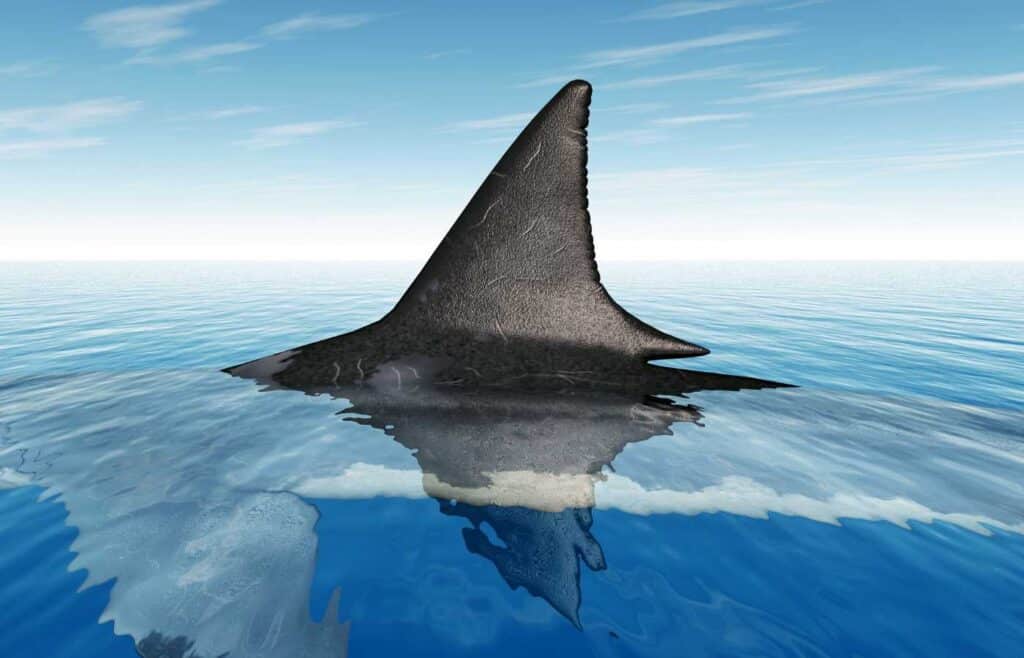
16. A shark’s signature dorsal fin at the top of its body helps to keep it stable and swimming in straight line.
17. Their caudal fin at the back of its body provides thrust, or power. It’s like their own personal motor!
18. The shark’s pectoral fins on its sides are used for steering during swimming and for lift.
19. The cartilage that their bodies are made of is lighter than bone, which helps keep them buoyant. (Source: pbs.org)
20. Shark skin feels like sandpaper. It is covered in tiny, specialized teeth called dermal denticles (aka “skin teeth”). (today.com) These scales point backwards towards the tail and help reduce friction from surrounding water when the shark swims.
APPEARANCE
21. Most sharks are white, gray and black.(Source: pbs.org)
22. Blue Sharks are indeed blue-colored!
23. Goblin sharks can a bright pink color! (Source: pbs.org)
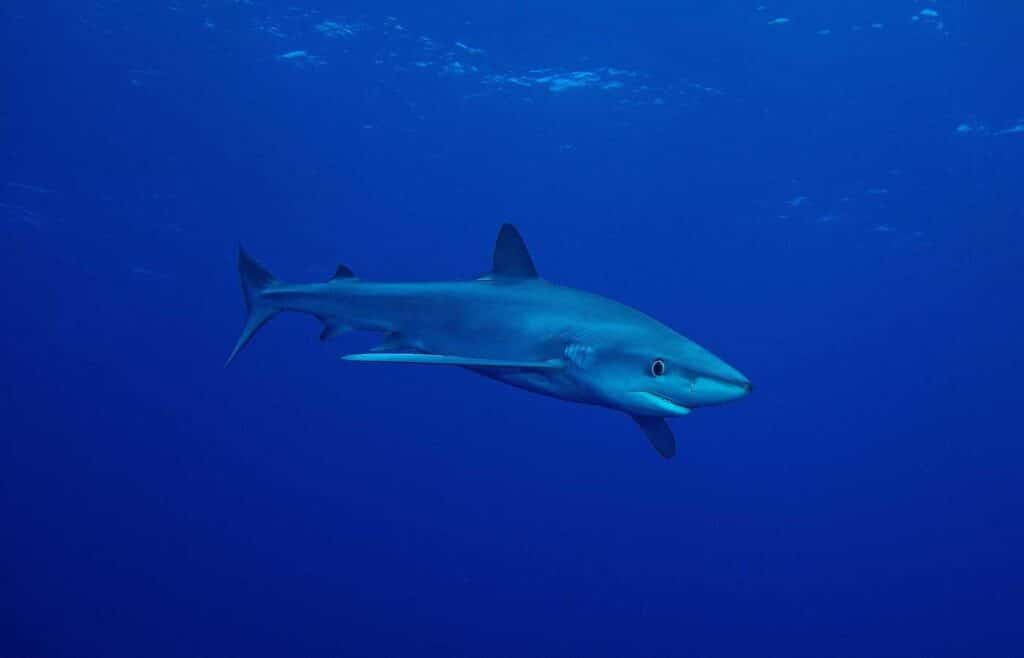
24. Zebra Sharks get their name from their intricate black and white pattern that resembles a zebra.
Want to learn about other strikingly patterned animals? Check out White Tiger Facts for Kids.
25. Hammerhead sharks get their named from their heads that are literally shaped like hammers. (Source: pbs.org)
26. The only place a hammerhead has a blind spot is directly above and below its head.
SENSES
27. Sharks only have inner ears. However, they have excellent hearing!
28. They can hear a fish thrashing in the water from as far as 500 meters away! (Source: sharktourshawaii.com)
29. Most sharks have eyes placed on the sides of their heads, rather than in the front, which means they don’t have very good stereo vision. (treehugger.com)
30. If a shark was put into a large swimming pool, it would be able to smell a single drop of blood in the water. (Source: sharktourshawaii.com)
31. Sharks have a true sixth sense. They can sense electricity, which means they can find prey hiding under sand or mud even if they can’t see it or smell it or hear it. (today.com) They way they do this is through the small black spots near their nose, eyes and mouth. They are special electroreceptor organs.

32. Sharks eyes are adapted to see very well in dark waters and at night. (Source: pbs.org)
33. Sharks can see colors. (Source: pbs.org)
34. Sharks can smell a single drop of blood from up to a third of a mile (0.53 kilometers) away. (Source: kids.nationalgeographic.com)
35. Hammerhead Sharks Have a 360-Degree field of vision. The only place a hammerhead has a blind spot is directly above and below its head.
Monkeys may not have electroreceptors like sharks, but their intelligence is astounding! Learn more in Monkey Facts for Kids.
TEETH
A shark’s sharp teeth are like razor blades and can basically cut through anything. Here are some fun facts about shark teeth:
36. Baby sharks (pups) are born with a complete set of teeth.
37. Sharks have multiple rows of teeth inside their jaw to help them catch their prey. (Source: pbs.org)
38. Shark teeth don’t have roots, so they fall out easily while the shark is eating.
39. Sharks typically lose at least one tooth per week.
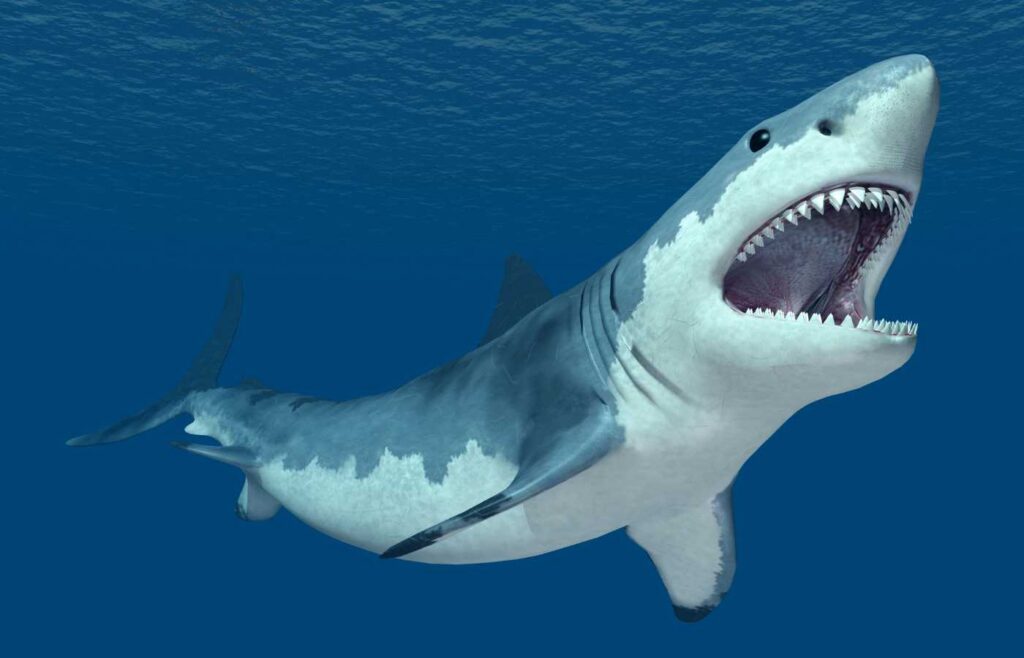
40. A shark always has a row of smaller teeth developing behind its front teeth. Eventually the smaller teeth move forward, like a conveyor belt, and the front teeth fall out. (Source: sharktourshawaii.com)
41. It can take a shark less than a day to produce a replacement tooth if they lose a tooth. (Source: pbs.org)
42. A Great White Shark can have over 30,000 teeth in its lifetime since their teeth get replaced whenever they lose one., (today.com)
43. Sharks have built in toothpaste. Researchers in Germany found that the teeth of several Shark species contain fluorinated calcium phosphate, the main ingredient in toothpaste. (Source: fishingbooker.com)
44. Sharks don’t get cavities!
45. A bull shark has the highest bite force of almost any fish, including a great white shark. It bites with a force of 5,914 Newtons. It’s one of the most dangerous sharks in the ocean.
Rhinos don’t rely on sharp teeth, but their sheer strength makes them formidable in the wild. Learn about these massive creatures in Rhinos Facts for Kids.
FOOD & HUNTING
46. Sharks are apex predators, meaning they are on the top of the food chain with no natural predators. (Source: pbs.org)
47. By eating fish, sharks create balance in the food chain and help marine ecosystems. (Source: pbs.org)
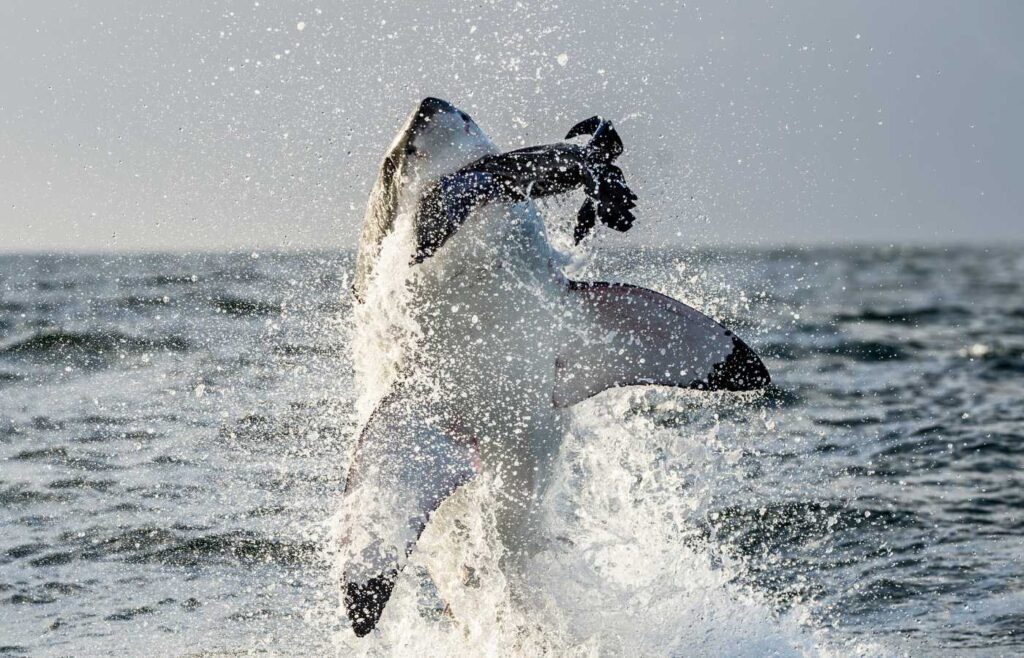
48. Shark’s jaws are not attached to their skull. Instead, they move separately with independent upper and lower jaws. This allows them to lift their head and thrust their mouth forward to bite its prey. (Source: sharktourshawaii.com)
49. Sharks don’t chew their food. Instead, they rip off chunks of meat and swallow them whole. (Source: kids.nationalgeographic.com)
50. Young sharks eat fish (including other sharks!) and rays. (Source: kids.nationalgeographic.com)
51. Adult sharks’ love to eat sea mammals, especially sea lions and seals. They will also eat sea turtles. (Source: kids.nationalgeographic.com)

52. To hunt, sharks go under their prey, swim up very quickly, burst out of the water (breach), and fall back into the water with the prey in their mouth. (Source: kids.nationalgeographic.com)
53. Cookiecutter Sharks steal circular chunks of flesh from living prey instead of killing them. Ouch! (Source: treehugger.com)
Hammerhead sharks have been known to use to pin stingrays against the sea floor! (Source: wwf.org.uk)
54. Great White Sharks can go a long time without eating, reportedly as long as three months! (Source: treehugger.com)
REPRODUCTION
55. Some sharks lay eggs to reproduce and other sharks give birth to their babies.
56. There is no parental care after birth. The babies are on their own from the start! (Source: pbs.org)
57. Mating is observed in only a few species of sharks. (Source: pbs.org)
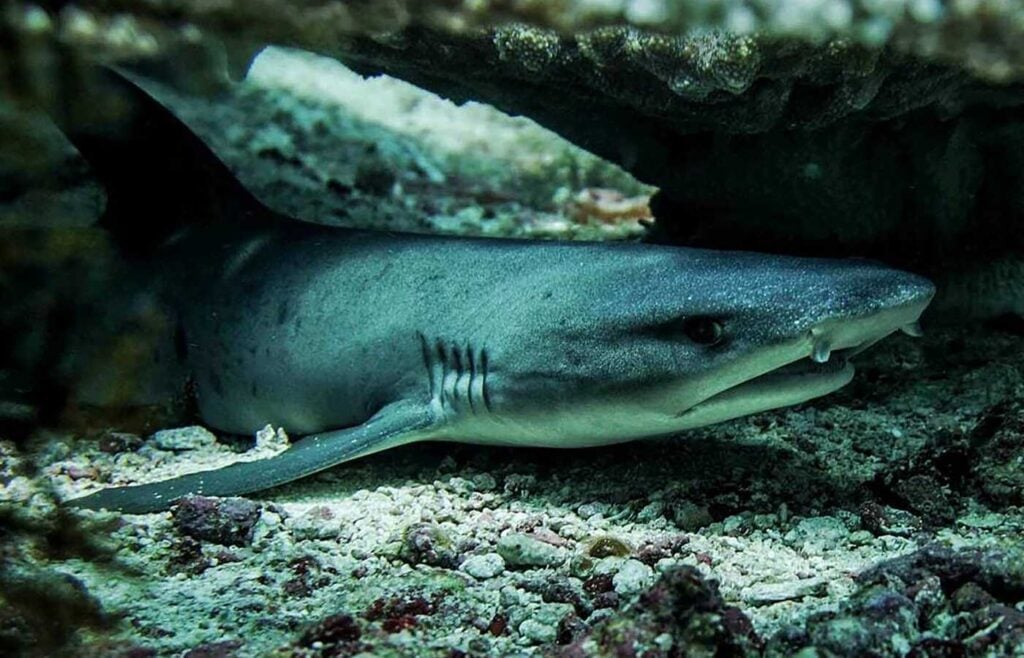
58. Their gestation period of agreat white shark is estimated to be around 12 months, but very little is known about where the females deliver the pups.
59. The courtship behavior of zebra sharks involves the male biting vigorously on the female’s pectoral fins and tail. Ouch! (Source: sportdiver.com)
60. Zebra sharks found in the Western Pacific and Indian oceans, have been known to have “virgin births” without mating. This is more commonly found in plants and lizards. (Source: bbcearth.com)
61. Some species of shark will return to where they were born to give birth, which is called natal philopatry. Sea turtles do this, too! (Source: treehugger.com)
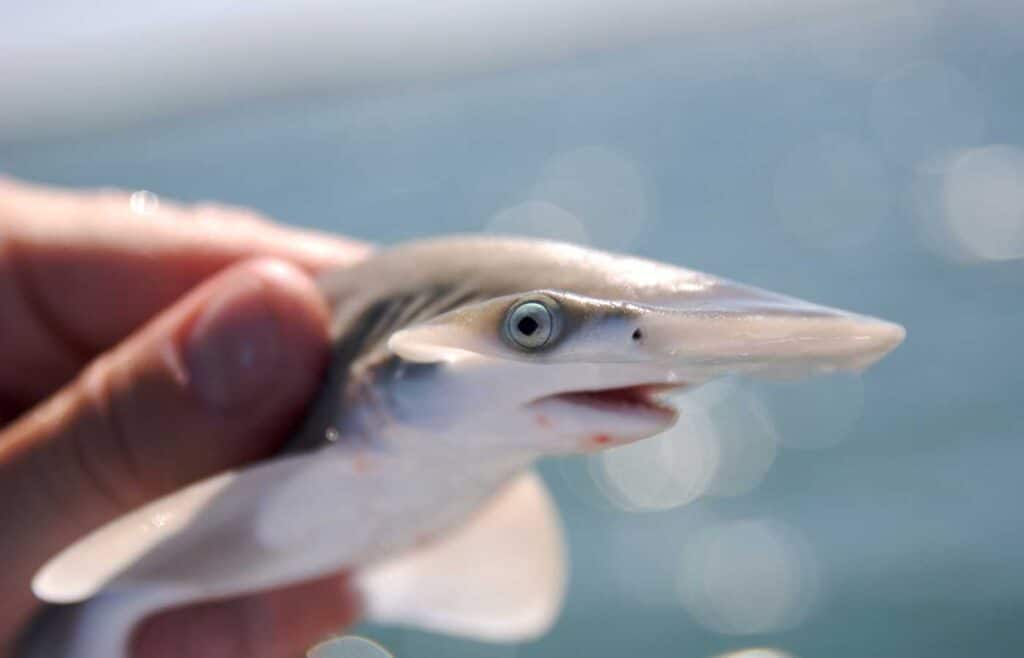
62. Shark embryos inside of their eggs can sense when danger in approaching! Predators can sense the developing fish through the electric fields emitted by their movement. (See Fact #31) But the embryos can also sense the approaching predator, so the embryos freeze stop breathing to “hide” and avoid detection (Source: treehugger.com)
63. Tiger shark embryos eat one another. Tiger sharks starts out with 12 embryos, but the biggest embryo kills and eats the other embryos and unfertilized eggs.
64. Sharks reach sexual maturity later than many animals and produce relatively few young. This contributes to their endangered status. (Source: pbs.org)
65. Baby sharks are called pups. (Source: kids.nationalgeographic.com)
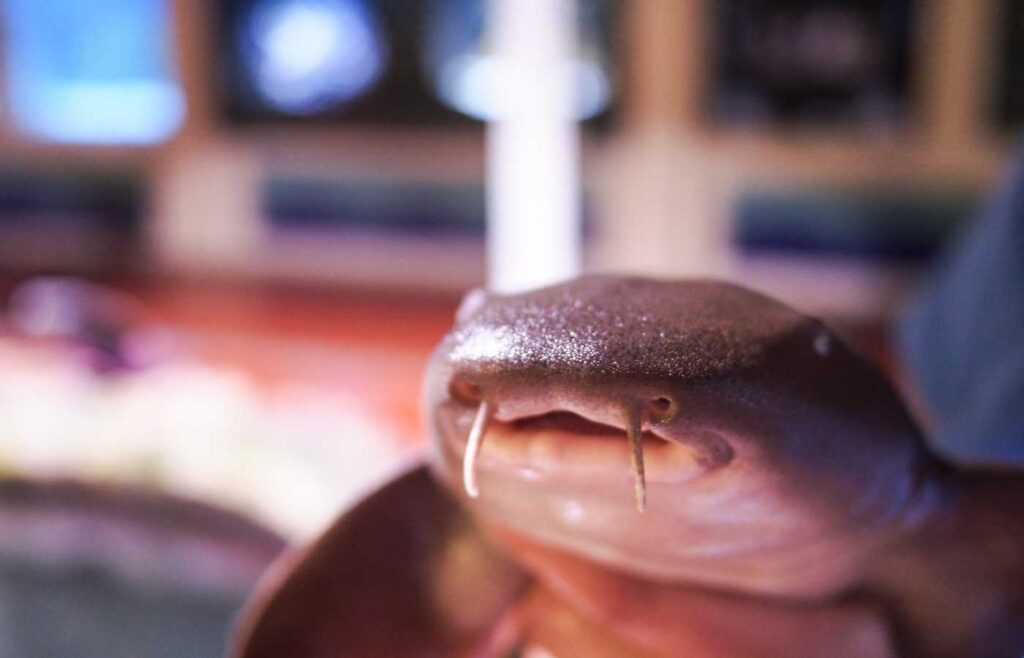
66. Many baby sharks do not survive their first year. (Source: kids.nationalgeographic.com)
67. A blue shark can give birth to more than 100 baby sharks at a time.
68. When a great white shark is born, it immediately swims away from its mother. Their mother may seem them only as prey and eat it. (Source: kids.nationalgeographic.com)
69. When a great white shark gives birth, she usually has two to ten youngsters.
LIFESPAN
70. Most shark species live 20 to 30 years. (Source: pbs.org)
71. Greenland sharks can live to be over 400 years old. (today.com)
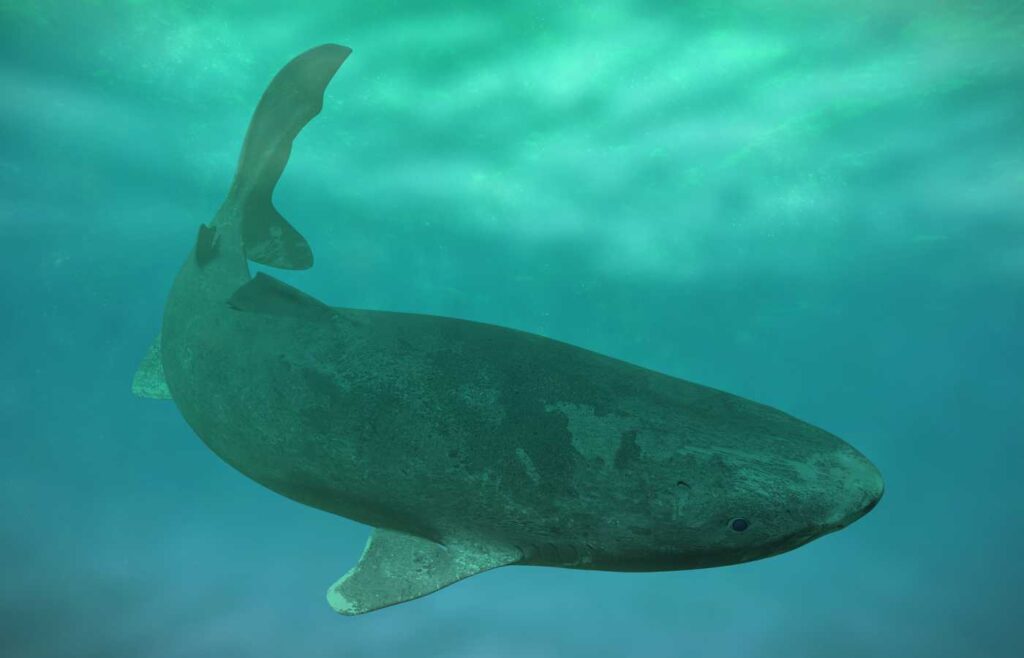
72. The spiny dogfish and whale shark are two species that may live over 100 years. (Source: pbs.org)
73. Because sharks skeleton are made of cartilage, their backbones grow in layers as they get older. Scientists can scan and count these layers, just like you’d count the rings on a tree. Once they work out how long a layer takes to grow, they can calculate approximately how old the shark is. (Source: fishingbooker.com)
HUMANS
74. Sharks are often listed as one of the most common “biggest fears.” (Source: pbs.org)
75. Your chance of dying in a shark attack is estimated to be one in 3,748,067. (Source: Florida Museum of Natural History)
76. Death by lightning strike is more common than death by shark attack. (Source: Florida Museum of Natural History)
77. Shark attacks are rare. There are around 5-10 shark attacks on human per year. (natgeokids.com)
78. The bull shark attacks on the Jersey Shore inspired the Hollywood movie “Jaws.”
ENDANGERMENT
Despite their bad reputation as being a danger to humans, humans are actually a huge threat to sharks. Read on to find out more about how endangered sharks are.
79. Shark populations around the world are in rapid decline, widely as a result of human activities. (Source: pbs.org)
80. The biggest threat to most shark populations is overfishing for shark fins. (Source: pbs.org)
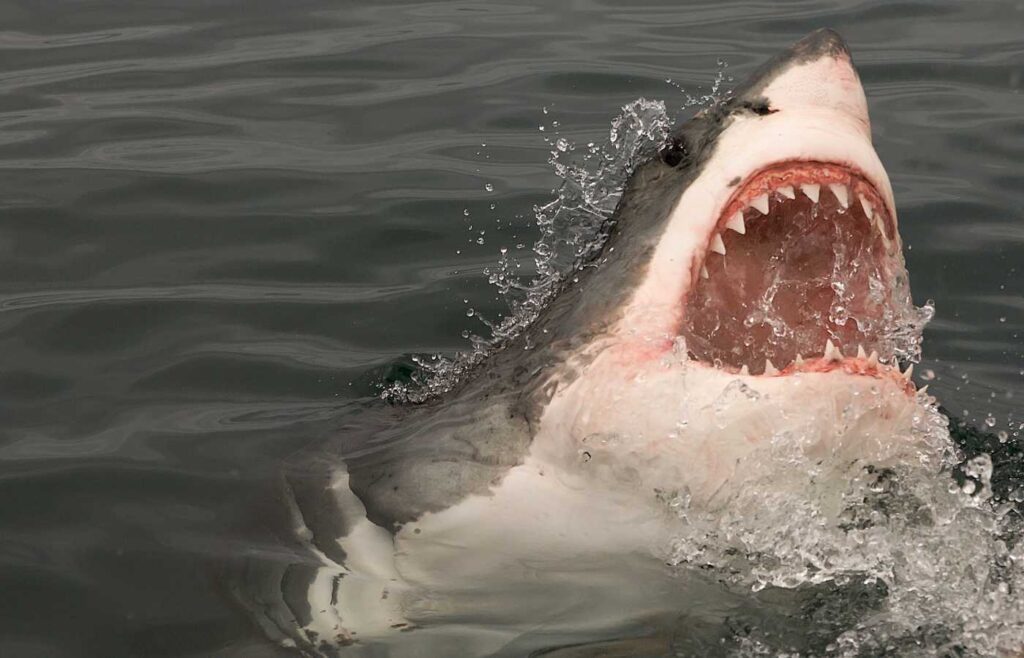
81. Shark fins are considered a delicacy in Asia. (Source: wwf.org.uk)
82. Of the 500 species of sharks, about 143 of which are under threat and listed from vulnerable to critically endangered by IUCN.
83. Climate change will negatively affect sharks who rely on coral reefs, which are at risk of ocean acidification and severe weather events. (Source: saveourseas.com)
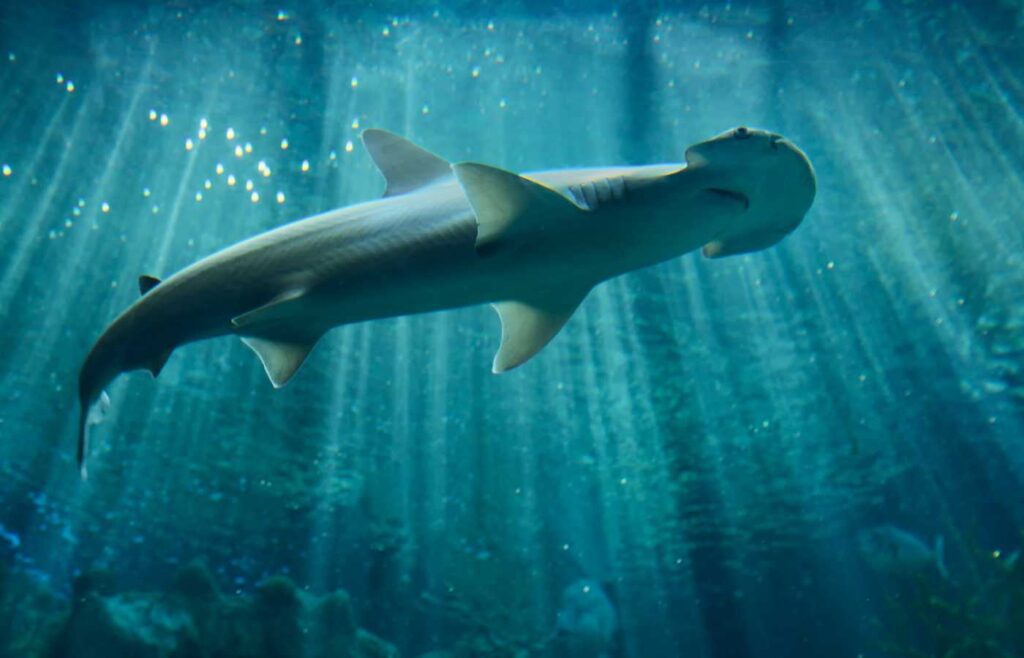
84. 50% of the world’s coral reefs have been lost and the rest could disappear completely by 2050 if climate change remains unchecked. (Source: wwf.org.uk)
85. You can help save coral reefs and shark habitats by reducing your plastic use and recycling. (Source: wwf.org.uk)
Emperor penguins are also threatened by environmental changes. Discover their struggles and adaptations in Emperor Penguin Facts for Kids.
BEHAVIOR
86. Most sharks are social and can be found in large schools. (Source: pbs.org)
Did you know wolves also form social groups? Learn more about pack behavior in Grey Wolf Facts for Kids.
87. Sharks meet together for breeding or hunting. (Source: pbs.org)
88. Sharks can travel thousands of miles in one year. (Source: pbs.org)
89. Sharks communicate through body language. When threatened, sharks swim in quick, exaggerated movements. (Source: pbs.org)

90. Some sharks have to move in order to breathe. Movement forces water over their gills, delivering oxygen to the blood stream. If the shark stops moving then it will suffocate and die. (Source: sharktourshawaii.com)
91. Other species of sharks have a spiracle that allows them to pull water into their respiratory system while at rest. (Source: www.fisheries.noaa.gov)
92. Each whale shark’s spot pattern is unique as a fingerprint.
93. When you flip a shark upside down they go into a trance-like state called tonic immobility. (Source: www.fisheries.noaa.gov)
MISC
94. Sharks have been around for over 450 million years. (today.com)
95. Sharks are older than trees! (today.com)
96. Sharks have outlived the dinosaurs and many other forms of life on Earth. (Source: pbs.org)
97. The fastest shark in the ocean is the short fin mako shark. It can reach speeds of up to 46 mph, allowing them to hunt swordfish, another extremely fast predator. (today.com)
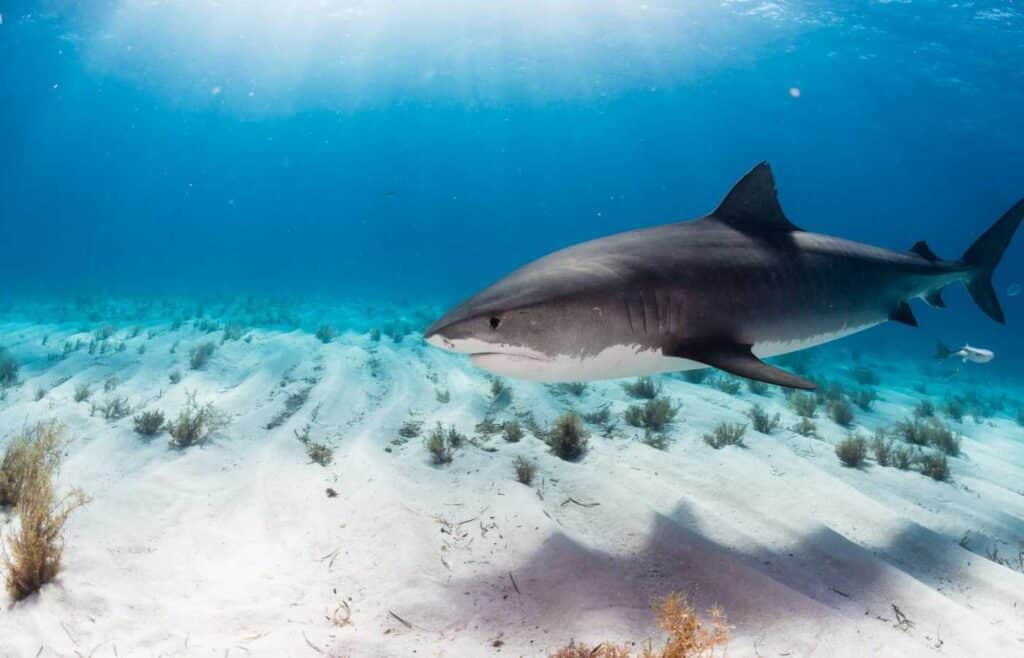
98. For most sharks, their body temperature is cold, like the temperature of the water they swim in. (Source: wwf.org.uk)
99. Great white sharks are warm-blooded, unlike most sharks. They have heat-generating muscles to keep them warm. (Source: pbs.org)
100. Because their skeletons are made of cartilage (like our noses) instead of bones, they don’t leave fossils like other animals – but fossilised shark teeth have been found. (Source: wwf.org.uk)
F.A.Q. ABOUT SHARKS
Do sharks have bones?
No, sharks have no bones. Shark skeletons are made entirely out of cartilage, the same material our ears and noses are made out of.
Because their skeletons are made of cartilage instead of bones, they don’t leave fossils like other animals – but fossilized shark teeth have been found. (Source: wwf.org.uk)
Do sharks lay eggs?
Some sharks lay eggs to reproduce and other sharks give birth to their babies. There is no parental care after birth. The babies are on their own from the start! Mating is observed in only a few species of sharks. (Source: pbs.org)
Are sharks mammals?
No, sharks are not mammals. Sharks are actually fish, despite their size and despite the fact that some of them do give birth to live young.
Are sharks fish?
Yes, sharks are actually fish (not marine mammals), despite their size and despite the fact that some of them do give birth to live young.
Are sharks older than trees?
Yes, sharks are older than trees. Sharks have been around for over 450 million years. (today.com)
Sharks have outlived the dinosaurs and many other forms of life on Earth. (Source: pbs.org)
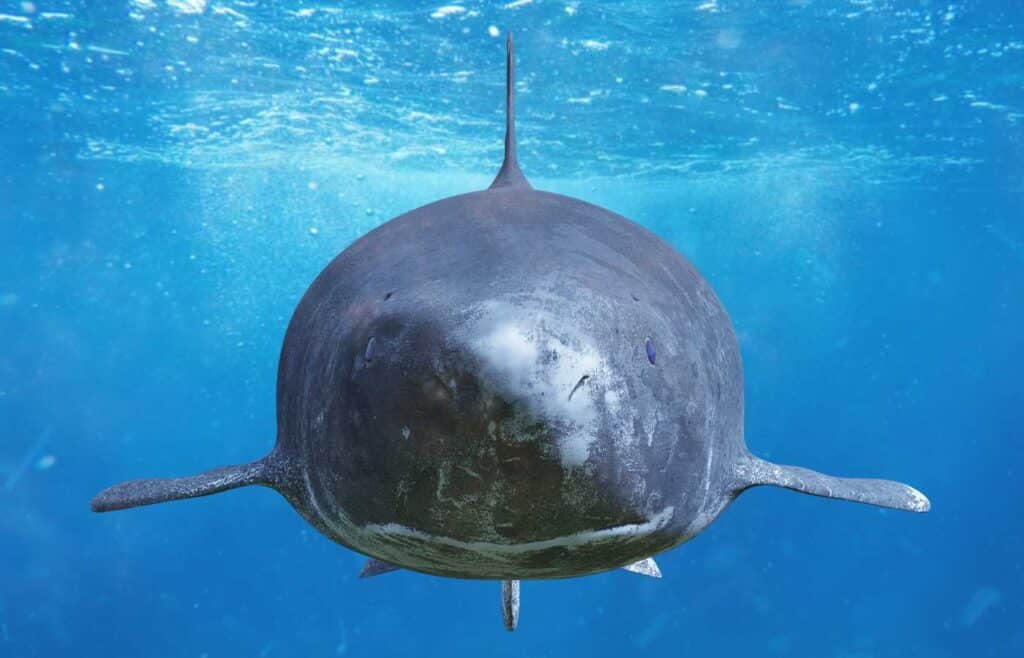
Are sharks endangered?
Of the 500 species of sharks, about 143 of which are under threat and listed from vulnerable to critically endangered by IUCN.
Shark populations around the world are in rapid decline, widely as a result of human activities. (Source: pbs.org)
The biggest threat to most shark populations is overfishing for shark fins. (Source: pbs.org)
Shark fins are considered a delicacy in Asia. (Source: wwf.org.uk)
What do sharks eat?
Young sharks eat fish (including other sharks!) and rays (Source: kids.nationalgeographic.com)
Adult sharks’ love to eat sea mammals, especially sea lions and seals. They will also eat sea turtles. (Source: kids.nationalgeographic.com)
Can sharks smell blood?
Yes, sharks have an excellent sense of smell. If a shark was put into a large swimming pool, it would be able to smell a single drop of blood in the water. (Source: sharktourshawaii.com)
Sharks can smell a single drop of blood from up to a third of a mile (0.53 kilometers) away. (Source: kids.nationalgeographic.com)
Where do sharks live?
Sharks lives in oceans all around the globe. They live in both deep water and shallow water, and in all temperatures, from tropical coral reefs to the Arctic sea ice. (Source: pbs.org)
To help shark conservation efforts, head to the World Wildlife Fund.
Related Posts:
- 100 Surprising Whale Facts Your Kids will Love
- 100 Mind-Blowing Facts About Elephants
- 50 Amazing Rhino Facts for Kids
- Emperor Penguin Facts for Kids
- White Tiger Facts for Kids
- Cheetah Facts for Kids
- Grey Wolf Facts for Kids
- Monkey Facts for Kids
Calie Herbst, Editor-in-Chief of Milwaukee With Kids, has spent over a decade combining her experiences as a parent of three to create a hub for Milwaukee’s family adventures.
Her decade-long teaching career in Milwaukee Public Schools and academic background, including a Master’s in Teaching from Marquette University and dual B.A.s in Sociology and Spanish from the University of Wisconsin – Madison, fuel her passion for inclusive and engaging family content.
Calie is also a recognized voice in local media, contributing to WISN Channel 12 News, WTMJ Wisconsin Morning News, Fox 6’s Real Milwaukee, and B93.3.
Discover more about Calie’s journey and editorial approach on her About Page and Editorial Policy Page.


